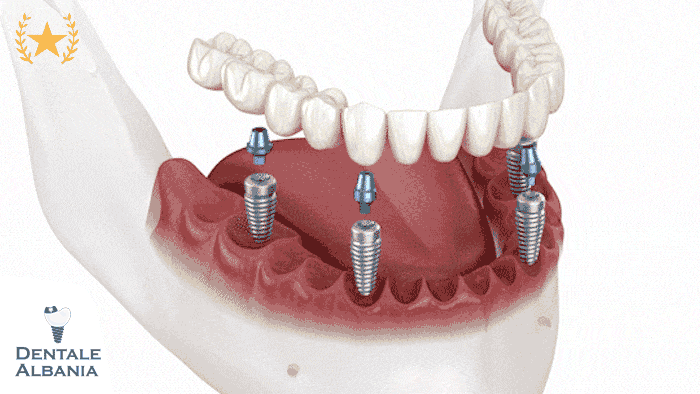Table of Contents
ToggleWhat Are Veneers? The Cosmetic Dentistry Fix Everyone’s Talking About

Dental veneers are one of the most sought-after cosmetic dental treatments today, offering a quick and highly effective way to transform your smile. But what exactly are veneers?
- Veneers are thin, custom-made shells designed to cover the front surface of your teeth. Their primary goal is aesthetic improvement—fixing discolored, chipped, misshapen, or gapped teeth to give you a more even, whiter, and natural-looking smile.
- Materials used in veneers include porcelain and composite resin. Porcelain veneers are known for their durability, resistance to stains, and lifelike translucency that mimics real enamel. Composite veneers, on the other hand, are more affordable and quicker to apply but may wear down more easily and be more prone to staining.
- Veneers are bonded directly to the enamel of your natural teeth. This allows them to stay firmly in place and deliver long-lasting results. Because they only cover the front part of your teeth, the natural tooth structure is largely preserved—although some enamel may need to be filed down, especially with porcelain veneers.
- One of the biggest reasons veneers have become so popular is their ability to deliver dramatic cosmetic improvements with minimal invasiveness. Whether you want a subtle enhancement or a full smile makeover, veneers are tailored to match the color, size, and shape of your teeth for a seamless result.
- People often choose veneers for their natural appearance, quick results, and stain resistance. They’re commonly used by celebrities and professionals alike to enhance their smile without braces or extensive procedures.
So, if you’re wondering, “What is a veneer in dentistry?”—think of it as a custom-designed upgrade for your smile, one that delivers both beauty and confidence with every tooth you show.
What Types of Dental Veneers Are Available?
Dental veneers come in several types, each with its own benefits, applications, and materials. Choosing the right kind depends on your needs, budget, and dental health.
What Are Porcelain Veneers?
- Porcelain veneers are the most popular type due to their strength and durability. They can last between 10 to 20 years with proper care.
- These veneers are highly resistant to staining, making them ideal for patients who want to maintain a bright smile.
- Porcelain mimics the natural light-reflecting properties of tooth enamel, offering a very realistic and aesthetic appearance.
- The process involves removing a small amount of enamel to make space for the veneer, followed by taking impressions and bonding the custom-made porcelain to the tooth surface.
- They are more expensive than other types but are considered a long-term investment due to their lifespan and appearance.
What Are Composite Veneers?
- Composite veneers are made from a tooth-colored resin, similar to the material used in dental fillings.
- These veneers are directly sculpted onto your teeth during a single dental appointment—no need for impressions or lab work.
- They are less costly than porcelain veneers but typically last 4 to 8 years.
- Composite veneers are more prone to staining and chipping, especially if proper care isn’t maintained.
- Despite being less durable, they are easier and cheaper to repair if damaged.
What Are No-Prep Veneers?
- No-prep veneers, like Lumineers and Vivaneers, are ultra-thin and require little to no enamel removal.
- These are minimally invasive, making them an attractive option for patients wary of dental drilling.
- Because less enamel is removed, the procedure is often less painful and may not require anesthesia.
- However, no-prep veneers may not be suitable for all cases—especially if major shape or color corrections are needed.
- They may also lack the same durability and stain resistance as traditional porcelain veneers.
How Much Do Veneers Cost and Are They Worth It?
Understanding the cost of dental veneers is crucial before starting your treatment. Prices vary widely based on several factors, including the type of veneers, the number needed, and where you receive treatment.
- Cost Ranges in the UK and Globally:
- In the UK, the average cost for porcelain veneers ranges from £500 to £1,000 per tooth, while composite veneers usually cost between £200 and £600 per tooth.
- Globally, prices can vary even more depending on the country—some clinics abroad offer packages for significantly less than in the UK or US.
- Porcelain vs. Composite Pricing:
- Porcelain veneers are more expensive due to the lab work involved, custom fabrication, and longer durability.
- Composite veneers are more affordable upfront but may require repairs or replacements sooner.
- Factors That Affect Price:
- The number of veneers you need will heavily influence the total cost. A single veneer for one discolored tooth will cost far less than a full smile makeover.
- The material (porcelain, composite, or no-prep) also plays a role in pricing.
- Your dentist’s expertise, clinic reputation, and location (city vs. rural) can significantly impact the final price tag.
- Payment Options and NHS Availability:
- Most private practices offer financing plans to spread the cost over several months or years.
- In the UK, veneers are generally not available on the NHS as they are considered cosmetic. However, in rare cases where there’s a clinical need (e.g., severe damage), NHS coverage might apply.
- Is It Worth It?
- For many patients, veneers are a long-term investment in confidence and smile aesthetics.
- They can also improve oral function if teeth are chipped or worn, making the expense justifiable for both cosmetic and functional reasons.
How Much Do Veneers Cost in Albania?
Albania has quickly become a leading destination for dental tourism, offering high-quality cosmetic dentistry — particularly veneers — at prices significantly lower than in countries like the UK, US, or parts of Western Europe. Patients from around the world travel to Albania for affordable smile makeovers without compromising on quality or safety.
Average Veneer Costs in Albania
-
Composite Veneers: Starting from €200 per tooth. These are the most budget-friendly option, applied directly to the tooth in a single visit.
-
Porcelain Veneers: Typically priced around €350 to €400 per tooth. Known for their natural look, durability, and stain resistance.
-
E-max Veneers: These premium all-ceramic veneers cost about €350 to €450 per tooth. They are custom-crafted and offer superior aesthetics.
-
Zirconia Veneers: Prices usually range from €325 to €450 per tooth. Zirconia is extremely strong and ideal for patients with bruxism (teeth grinding).
When compared to the UK, where a single porcelain veneer can cost between £700 and £1,200, opting for treatment in Albania can result in savings of 60–70% — even after accounting for travel and accommodation.
Factors That Affect Veneer Costs in Albania
-
Type of veneer material: Porcelain, E-max, and zirconia are more expensive than composite due to their manufacturing process and longevity.
-
Number of veneers required: A full smile makeover (usually 6–10 veneers) will naturally be more costly than correcting a single tooth.
-
Dental clinic reputation: Top-rated clinics in Tirana or Durrës that cater to international patients may charge more but offer advanced equipment, English-speaking staff, and luxury-level care.
-
Additional services: Many Albanian clinics offer all-inclusive packages that cover consultations, panoramic x-rays, digital smile design, temporary veneers, airport transfers, and accommodation.
Why Choose Albania for Veneers?
-
EU-standard materials and equipment
-
English-speaking dental teams
-
Short waiting times and quick treatment turnaround
-
Beautiful travel destination with affordable luxury
If you’re considering veneers but are put off by high costs in your home country, Albania offers a compelling alternative. With top-tier materials, skilled dentists, and transparent pricing, it’s no wonder more patients are choosing to restore their smiles abroad.
How Long Do Veneers Last and When Should They Be Replaced?
Veneers aren’t forever, but with the right care, they can last many years. Understanding their lifespan and knowing when they need replacing is essential for anyone considering this cosmetic treatment.
- Average Lifespans by Type:
- Porcelain veneers typically last 10 to 20 years, sometimes longer with excellent care.
- Composite veneers usually last between 4 to 8 years, though they’re easier to repair or replace.
- Factors That Affect Durability:
- Oral hygiene habits: Daily brushing, flossing, and regular dental checkups are key.
- Teeth grinding (bruxism): This can shorten the lifespan of veneers, especially if a nightguard isn’t used.
- Diet and lifestyle: Chewing on hard foods or objects, smoking, and frequent consumption of staining foods and drinks (like coffee and red wine) can damage or discolor veneers over time.
- Signs You May Need Replacement:
- Visible cracks, chips, or lifting around the edges of the veneer.
- Discoloration or staining that doesn’t respond to professional cleaning.
- Tooth decay under or around the veneer.
- Gum recession that affects the look or fit of the veneer.
- Regular Checkups Are Key:
- Visiting your dentist every 6 months allows early detection of issues and helps you get the most life out of your veneers.
What Is the Procedure for Getting Veneers?
Getting veneers is a multi-step process that combines precision, aesthetics, and customization. Knowing what to expect before, during, and after the procedure can help ease any concerns.
How Are Teeth Prepared for Veneers?
- Tooth preparation usually involves removing a thin layer of enamel from the front of the teeth to make room for the veneer and ensure a natural-looking fit.
- The amount removed is generally less than 1mm, just enough to allow proper placement without bulking up the tooth.
- Depending on your sensitivity, your dentist might offer a local anesthetic to keep you comfortable, though many patients don’t need it.
- If you’re getting no-prep veneers, this step may be skipped or minimized significantly.
What Happens During Veneer Fitting?
- Your dentist will take impressions of your teeth, either using soft putty or a digital scanner, to create a precise mold for your veneers.
- While your custom veneers are being made (usually 1–2 weeks), you may be given temporary veneers, especially if a lot of enamel was removed.
- Once your permanent veneers are ready, your dentist will place them on your teeth to check fit, shape, and color.
- The teeth are then cleaned and roughened slightly to allow for strong bonding.
- Using dental cement and a UV curing light, the veneers are permanently bonded in place.
- Follow-up appointments may be scheduled to check the veneers, especially to ensure your bite feels comfortable and your gums are adapting well.
Are Veneers Painful or Uncomfortable?
For most patients, the veneer procedure is minimally invasive and well-tolerated, but it’s natural to have concerns about pain or discomfort.
- Enamel removal during preparation is minor, so pain is usually minimal. Dentists may use a local anesthetic if you’re particularly sensitive.
- You might experience temporary tooth sensitivity to hot or cold after the procedure. This is due to enamel reduction but often fades within a few days.
- Post-treatment soreness in the gums is common, especially if temporary veneers were used. This usually resolves quickly with routine oral care.
- If you’re nervous, sedation options (like conscious sedation) are available in many clinics to help you relax during the procedure.
- Most patients report that the final results feel natural and that any discomfort was worth the improvement in confidence and smile aesthetics.
What Are the Pros and Cons of Dental Veneers?

Veneers offer impressive cosmetic benefits, but it’s important to understand both the advantages and the potential drawbacks before deciding.
What Are the Advantages of Veneers?
- Aesthetic enhancement: Veneers instantly improve the color, shape, and overall symmetry of your teeth, creating a naturally beautiful smile.
- Stain resistance: Porcelain veneers are highly resistant to staining from coffee, tea, wine, and tobacco.
- Durability: With proper care, veneers (especially porcelain) can last 10 to 20 years or more.
- Minimal maintenance: Unlike some dental treatments, veneers don’t require special products or routines—just good oral hygiene.
- Quick results: Compared to orthodontics or implants, veneers offer immediate improvement after just 1–2 appointments.
What Are the Disadvantages of Veneers?
- Irreversible: Traditional veneers require enamel removal, making the procedure non-reversible.
- Tooth sensitivity: Some patients may experience increased sensitivity to hot and cold after enamel removal.
- Risk of damage: Veneers can chip or crack under excessive pressure, especially if you grind your teeth or bite hard objects.
- High cost: Veneers are often not covered by insurance and can be a significant out-of-pocket investment.
- Potential need for replacement: Over time, veneers may need to be repaired or replaced due to wear, trauma, or gum changes.
Who Is a Good or Bad Candidate for Veneers?
Not everyone is an ideal candidate for veneers. Understanding who qualifies—and who doesn’t—helps ensure long-term success and satisfaction with the treatment.
Who Is a Good Candidate for Veneers?
- People with discolored or stained teeth that do not respond to whitening treatments.
- Patients with chipped, cracked, or worn-down teeth looking to restore shape and uniformity.
- Individuals with small gaps between teeth who want a fast aesthetic fix without braces.
- Those with minor misalignment who are not suitable for orthodontic treatments.
- People with healthy gums and sufficient enamel for bonding the veneer securely.
Who Should Not Get Veneers?
- Patients with gum disease or untreated tooth decay, as these conditions must be resolved first.
- People with very little enamel left, which can make it difficult to bond the veneer effectively.
- Those with high tooth sensitivity, which may be worsened by enamel removal.
- Patients who grind or clench their teeth (bruxism), unless they wear a nightguard, since this can damage veneers.
- Individuals with unrealistic expectations or seeking a “perfect” Hollywood smile when their needs are better met with other procedures.
Can Veneers Fix All Cosmetic Dental Issues?
Veneers are a versatile cosmetic solution, but they’re not a fix-all for every dental concern. Here’s what they can and can’t do:
- Cover discoloration and staining that cannot be treated with whitening.
- Hide minor chips and cracks for a smooth, flawless look.
- Close small gaps between teeth for a more uniform smile.
- Improve the shape or size of teeth that appear too short or uneven.
- Create the illusion of straighter teeth when misalignment is mild.
However, veneers have limitations:
- They do not replace missing teeth. Dental implants or bridges are needed in those cases.
- They cannot fix severe misalignment or bite issues, which require orthodontic intervention like Invisalign or braces.
- They don’t strengthen weak teeth — crowns are better for structural support.
How Do Veneers Compare to Crowns and Implants?
Veneers, crowns, and implants are all popular dental treatments — but they serve very different purposes. Here’s how they compare:
- Veneers only cover the front surface of the tooth, improving aesthetics without altering the entire tooth structure.
- Crowns cover the entire tooth, offering both cosmetic enhancement and structural support for damaged or weakened teeth.
- Dental implants replace missing teeth entirely, consisting of a titanium screw placed into the jawbone with a crown on top.
Key comparisons:
- Invasiveness: Veneers require minimal enamel removal. Crowns require more reshaping. Implants involve surgery.
- Use Cases:
- Veneers: great for discolored, misshapen, or gapped teeth.
- Crowns: ideal for cracked, root canal-treated, or severely decayed teeth.
- Implants: necessary when a tooth is missing or needs extraction.
- Longevity & Cost: Implants tend to be the most expensive and durable. Crowns are strong and mid-priced. Veneers are durable but typically cosmetic, with costs varying by type.
What Happens to Natural Teeth Under Veneers?
Many patients wonder what becomes of their natural teeth once veneers are applied. It’s important to understand that veneers are cosmetic, not restorative — and your natural teeth still play a vital role.
- The natural teeth are still alive: Veneers are bonded to the front surface of the teeth, which means the tooth’s core structure remains intact and functional.
- Enamel is partially removed: To create space for the veneer, a thin layer of enamel is shaved off. This process is irreversible but generally doesn’t affect the tooth’s internal health.
- Teeth can still decay underneath veneers: If oral hygiene is neglected, cavities can form at the margins where the veneer meets the natural tooth. This is why regular brushing and flossing are essential.
- Yellowing can occur under veneers: While veneers are stain-resistant, the tooth beneath can discolor over time, especially if the veneer isn’t sealed properly.
- Gum recession can expose edges: With age or poor gum care, the gums may recede, exposing the veneer margins and making them more noticeable.
Key takeaway: veneers enhance the look of your teeth, but you must maintain your oral health to keep both the veneers and the natural teeth underneath in top condition.
Do You Have to Remove All Your Teeth for Veneers?
One of the most common misconceptions about veneers is that your natural teeth must be completely removed to apply them. Thankfully, this is far from the truth.
- Veneers are placed over your existing teeth: The procedure is designed to enhance the front surface of your natural teeth, not replace them.
- No tooth extraction is involved: Unlike dental implants, which replace missing teeth, veneers rely on your existing teeth as a foundation.
- Only minor reshaping is required: A thin layer of enamel is usually shaved off (typically 0.3 to 0.7 mm) to allow the veneer to sit flush and look natural.
- Tooth structure remains mostly intact: While the procedure is considered permanent, most of your tooth remains untouched beneath the veneer.
- You can get veneers on individual teeth: You don’t need a full set. Veneers can be placed on one or several teeth depending on your needs.
In summary, veneers enhance — not replace — your natural teeth. They’re ideal for those who want a better-looking smile without undergoing more invasive procedures like crowns or implants.
Do Veneers Look Fake or Obvious?

One of the top concerns patients have before getting veneers is whether their new smile will look natural — or obviously artificial. Fortunately, modern dental technology has come a long way.
- Advanced materials mimic natural enamel: Porcelain veneers, in particular, reflect light in the same way natural teeth do, giving a lifelike appearance.
- Customized for each patient: Your dentist works closely with a dental lab to choose the right shape, size, and shade to match your existing teeth or create a completely new smile.
- Natural shading and translucency: High-quality veneers are layered with natural variations in color and texture to avoid a “fake white” look.
- Poor design can look bulky or oversized: When veneers are too thick or too opaque, they may appear unnatural. This is usually due to low-quality work or skipping customization.
- Proper fit and contouring make a difference: Good dentists take into account your facial symmetry, lip movement, and bite when designing veneers.
How Do You Care for Veneers After They’re Placed?
Veneers are low-maintenance, but that doesn’t mean no maintenance. Keeping your veneers (and the natural teeth behind them) in top condition requires a consistent routine and a few smart precautions.
How to Clean Teeth Under Veneers
- Brush twice daily with a soft-bristled toothbrush: Gentle brushing is key to avoid damaging the veneer’s surface.
- Use non-abrasive fluoride toothpaste: Stay away from whitening toothpaste, as they can scratch or dull the porcelain.
- Floss daily to protect your gum health: Veneers end at the gum line, and plaque buildup can lead to inflammation or even gum recession.
- Antibacterial mouthwash helps reduce bacteria: Choose alcohol-free mouthwash to avoid drying your mouth and irritating gums.
- Schedule regular dental cleanings: Your hygienist will know how to clean around veneers without harming them.
Can Veneers Fall Off or Be Damaged Easily?
While veneers are durable, they’re not indestructible. Like your natural teeth, they need a bit of care to prevent accidents or damage.
- Avoid biting into hard items: Ice, fingernails, pens, and hard candies can crack or chip veneers.
- Don’t use your teeth as tools: Opening packages with your teeth is a fast way to loosen or fracture a veneer.
- Wear a mouthguard if you grind your teeth: Bruxism can damage veneers just as it does real enamel.
- Re-bonding is possible if one comes loose: If a veneer falls off, it can often be reattached if it’s still intact.
- Veneers can be replaced if damaged: A broken veneer usually needs to be replaced rather than repaired.
Can You Tell If Someone Has Veneers?
One of the biggest concerns people have is whether veneers will look fake or obvious. Fortunately, advancements in dental technology have made it easier than ever to create a natural-looking smile.
- High-quality veneers are nearly undetectable: When crafted and placed by experienced dentists, veneers mimic the color, translucency, and shape of natural teeth.
- Custom shading and contouring ensure a seamless blend: Veneers are color-matched and sculpted to blend perfectly with surrounding teeth.
- Poorly fitted veneers can be noticeable: Oversized or unnaturally white veneers may appear fake or bulky, which is why choosing the right dental provider is crucial.
- Most celebrity smiles are veneer-enhanced: Many Hollywood smiles are the result of expertly placed veneers that enhance aesthetics without appearing artificial.
- Subtle results are possible: If you want just a slight improvement rather than a dramatic change, veneers can be designed to reflect that.
Frequently Asked Questions About Veneers

How Long Do Dental Veneers Last?
- Porcelain veneers typically last between 10 to 20 years with proper care. They are known for their durability, strength, and resistance to stains, making them a long-term solution for cosmetic dental issues.
- Composite veneers have a shorter lifespan, usually lasting between 4 to 8 years. While they’re more affordable and quicker to apply, they are more prone to chipping, staining, and wear over time.
- Lifestyle habits impact longevity. Habits like teeth grinding (bruxism), nail-biting, or using your teeth as tools can shorten the lifespan of both porcelain and composite veneers.
- Proper dental hygiene extends veneer life. Brushing twice a day with non-abrasive fluoride toothpaste, flossing daily, and attending regular dental checkups are essential to maintaining both veneers and your natural teeth.
- Replacements may be necessary. If veneers crack, chip, or detach, or if your gums recede significantly exposing the tooth margin, you may need to replace them. Your dentist can assess whether full replacement or minor repair is needed.
- Protective measures like mouthguards help. If you play contact sports or grind your teeth at night, using a custom mouthguard or night guard will help protect your veneers from damage.
How Much Does It Cost to Have Veneers Done?
- Veneer prices vary widely depending on the type (porcelain or composite), the number of teeth treated, and the clinic’s location and expertise. In the UK, porcelain veneers typically cost £500 to £1,000 per tooth, while composite veneers range from £200 to £600 per tooth.
- Porcelain veneers are more expensive, but they last longer (10–20 years), offer superior aesthetics, and are more stain-resistant than composite alternatives. Composite veneers, though more budget-friendly, may need more frequent replacements.
- Location matters. Clinics in major cities or prestigious areas often charge more due to higher overheads and demand. Dental tourism (e.g., veneers in Turkey) has become popular due to significantly lower costs abroad, though patients must weigh this against risks and aftercare challenges.
- Additional costs may apply, such as consultations, x-rays, digital scans, and temporary veneers. Some clinics include these in the treatment plan, while others list them separately.
- Payment plans and financing options are commonly available at private clinics. Monthly installments can make the treatment more accessible. However, veneers are generally not covered by the NHS, as they are considered a cosmetic procedure.
The investment is both cosmetic and psychological. For many patients, veneers enhance self-confidence and satisfaction with their appearance, often making the price worth it in the long run.








